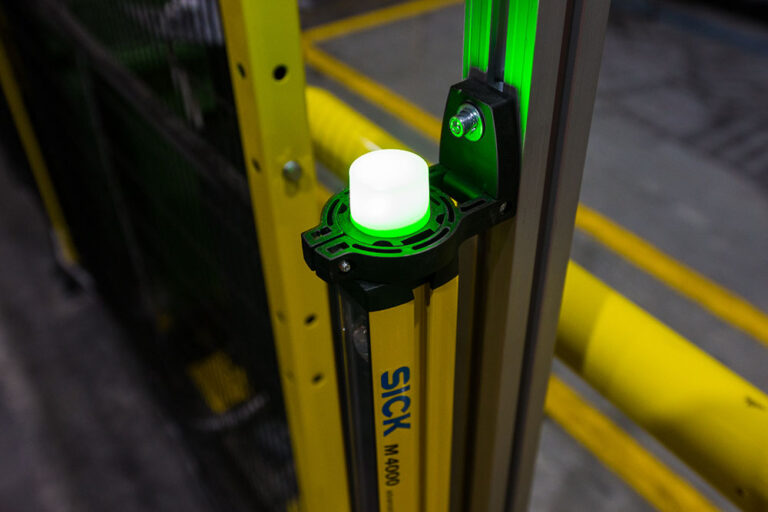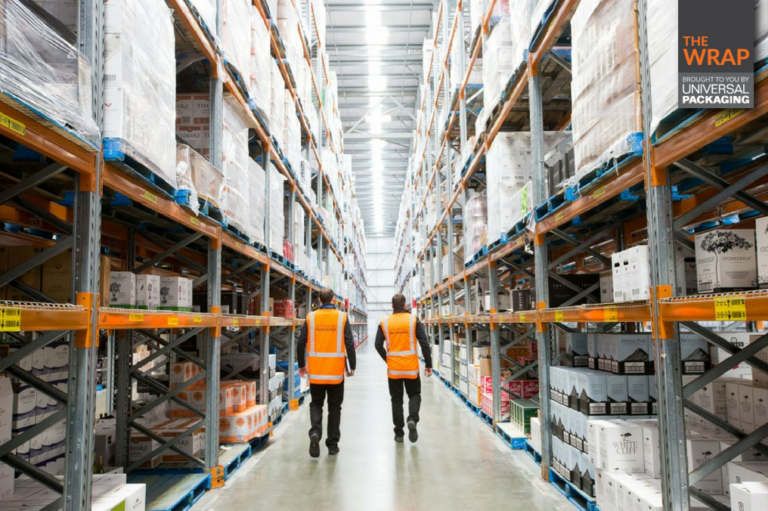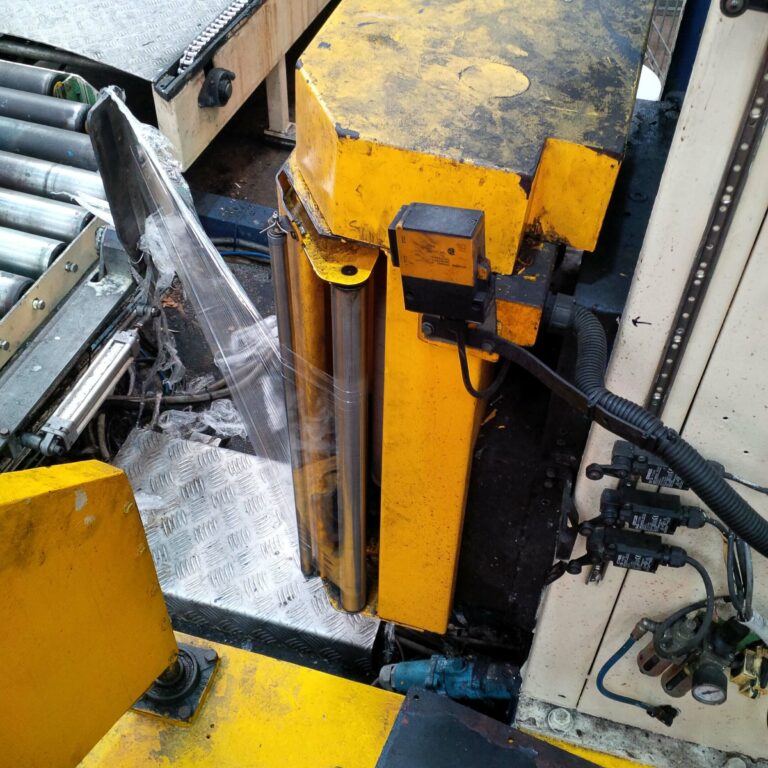FAQs
Keeping our customers in the know and up to speed is a priority for the Universal Packaging team. So, if you can’t find an answer here, please get in touch.
Equipment Servicing
Our team gets called out for everything from a jammed power button to the film carriage getting stuck to film getting caught. Sometimes it’s a simple fix – the I.T equivalent would be “turning it off and on again”, and sometimes simple preventative measures can be put in place to ensure the issue doesn’t reoccur. Other times however, more specialist knowledge or specific parts are required to fix the issue.
Regular servicing ensures dependable performance and extends equipment lifespan. It will also reduce the risk of damaging products from incorrectly applied pallet wrap and decrease the risks of downtime and productivity loss that comes with breakdowns
Sustainability
Trials are underway currently with a paper-based pallet wrap. While commercial viability is still some time away, we expect this to eventually be a viable alternative to current pallet wrap.
Currently some 480,000 tonnes of paper fibre are collected annually across New Zealand, around 50% of which is recycled here. The remainder has been exported but overseas demand has reduced considerably for mixed papers. Domestic fibre processing is at full capacity however, and it will take significant capital investment to increase this capacity.
We look forward to this occurring. While we will certainly be early adopters of this packaging, a holistic and pragmatic view must be taken to ensure of the best possible result.
Simple answer: No. Stretch wrap that contain prodegradant additives such as oxo-degradable and photo-degradable plastics contain additives that makes them break down faster. Unfortunately, this type of wrap quickly fragments into smaller pieces, known as microplastics.
Oxo-degradable and photodegradable plastics cannot be composted or recycled and are another source of contamination for NZ’s recycling system – making environmental problems worse. The government announced in June 2021 that NZ will be phasing out oxo and photo-degradable plastics by late 2022.
Yes, because in our work ‘less’ can be ‘more’. More companies using our services to wrap less means our reputation as an industry leader continues.
That’s why there are no ‘more or less’ measurements at Universal Packaging. We calculate everything to ensure your packaging can protect your goods and prevent damage without using unnecessary resources. Our aim is to save you plastic with each and every pallet.
No, 33 and 55 layers does not increase the density of the film. There are instead more layers of high performance ultra-thin material within the specified micron of the film. This enables this pallet wrap to stretch further while staying stronger than other film.
Get in touch today to have one of our expert technical sales team help you optimise your wrapping processes and minimise your packaging waste.
Plastic identifications codes are used to separate the different types of plastic material, PET, LDPE, PVC for example. Code 4 plastics are packaging materials made from low-density polyethylene resin. These are one of the most common types of plastic packaging in New Zealand.
As stretch wrap is generally not printed and is clean it is easier to recycle than plastic that has been contaminated with food or heavily printed with ink. For more information we suggest visiting the Plastics NZ website.
The 55-layer NanoEcho stretch film is made from 30% recycled material, allowing it to stretch further and wrap with strength without relying on nearly as much traditional plastic material. Large distributers make significant carbon reduction gains by using this innovative pallet wrap.
Our expert team at Universal Packaging can assess your machinery and make recommendations for what will work best.
Biodegradable plastics are plastics that can be completely broken down via natural processes. This can take up to 100 years to occur.
Oxo or Oxy-biodegradable plastics have an additive that speeds up this process of degradation. However, as it does not occur naturally, micro particles can still be detected, particles that will linger in the earth’s environment for much, much longer.
Bio-based plastics are primarily made from bio-materials and renewable raw materials such as cane sugar. These plastics can be fully recycled in standard recycling systems.
Presently there are no biodegradable or compostable wrap solutions available that perform as well as standard LLDPE film. While there are some options in the marketplace, testing shows that these don’t meet the performance criteria we require for our clients. Which means less strength in wrapping and more potential product damage – a result that’s counterproductive for all.
In New Zealand waste disposal systems also aren’t set up to accept these kinds of films efficiently. Compostable film cannot be mixed into the normal recycling streams and if disposed of in landfill it offers little environmental benefit than standard stretch film. Until a commercial composting facility can handle the capacity in New Zealand, we do not recommend using this film.
If your business will only be wrapping product that is used in a closed-loop operation (meaning there are arrangements with a commercial compost facility and there is control of all wrap disposal post-use), then biodegradable or compostable wrap may be viable. If your operation could benefit from this, please get in touch and we can discuss your options.
First, get a good packaging audit from an industry specialist. With the advice and expertise of our team we can run your pallets through a number of focused testing processes. In doing so we’ll be able to accurately gauge what is going where and how improvements can be made. These are often small tweaks that can have big consequences on the plastic used.
Often we’ll suggest moving from older, traditional stretch film packaging to new Nano film packaging.
NanoWrap helped lead the way here. This innovative nano-layer cast film allows our customers to save up to 50% in wrap use (and the associated cost savings that come with this change).
Now NanoEcho is providing even more savings – this 55-layer sustainable pallet film is made from 30% recycled material and fully recyclable.
Overall, it pays to have a pragmatic look at the bigger picture around your wrapping processes. We help with technological advice, layout changes and other key facets of the distribution model, ensuring everything is as efficient as possible.
Site Optimisation
We can provide an ROI calculation for your site, showing how time, labour and energy can be maximised with either a new layout and/or an investment in new equipment. With the data in place, it should be clear whether part or full automation is required.
To ensure any disruptions have minimal effect on business any changes are best made in off peak times.
Safety Systems
We work with accredited risk management consultants and our clients in scoping and designing safety systems to work with new and existing wrapping equipment, ensuring all measures perform and comply to AS/NZ standards for controls, interlocks and guarding.
One of the most important considerations when planning and installing a pallet wrapping safety system is simple but, also, very complex: everyday human behaviour.
A key approach here is ensuring any system doesn’t in any way hinder productivity. If any additional steps are added to an existing set-up, employees may often attempt to find ‘workarounds’ to keep up with targets. It can wind up with new set-up that’s less safe than before.
So, from the start, we don’t just look at the ‘nuts and bolts’ of any new technology. We help clients develop their unique risk assessment and the features that will then help minimise their risks. Our wider perspective of user behaviour and workplace efficiency and safety ensures a well-designed system is correctly scoped and properly installed.
Light curtains are an easy, safe way to include entry and exit points around machinery without requiring workers to open and close gates. An emitter and receiver are mounted opposite one another and, when the connection between the two is broken (by a person walking between them), the machinery will automatically shut off. This approach can be combined with physical barriers, with the light curtain used as both a loading zone and an entry point for operators.
To start with, fencing off equipment reduces the risk of a forklift backing into a machine, causing the need for costly repairs. It also means that only those intending to operate the equipment will be in its vicinity when it is in operation. For the user, there is little change to how the machine operates once inside the barrier, but this extra safety step can help the operator to focus on the job at hand. While safety fencing and light curtains are not yet a requirement by law, many companies are installing them to ensure optimal safety for staff, protection for equipment and ongoing peace of mind.
Some might be surprised by the number of accidents and long-term health effects that occur due to incorrect hand-wrapping technique.
First there is the volume of sound created by the wrap, particularly if the pallet wrap is a traditional blown film product. This can be louder than the average lawnmower when unwrapping, making it difficult to hear any approaching forklift. Long-term hearing damage can occur if the right hearing protection is not work while using this type of pallet wrap.
Then there is the strength and general physicality needed to hand wrap pallets. Walking backwards around a pallet while correctly holding the roll can be difficult. Which is why we always recommend workers bend their knees correctly and wrap pallets using forward-walking application with the right equipment.
The balance should always tip towards the human side of the equation – both in protecting them and considering the many idiosyncrasies of human behaviour.
That’s why it is possible to have too many fail-safes or safety processes. If this occurs staff will look for their own solutions to avoid them, increasing the likelihood of accidents. It’s also why we scope sites carefully and always defer to the PCBU (Person in Charge of the Business Unit) when recommending safety solutions. Every system must fit for the process and people it is designed for.
Any new system will need to be specified by the consultant and signed off by the client. Universal Packaging is not ultimately responsible for the compliance of the finished system, as we work in a collaborative process with the consultant and client and are only responsible as supplier and installer of the equipment/guarding etc.
Containment Testing
On average, the required containment force of a load is around 1% of the weight of the goods on the pallet. Without this measurement, you can risk damage to goods while they’re in transit – which is the whole reason for wrapping them up in the first place. However so too does this measurement change according to other variables within the pallet load.
Depending on the product being wrapped and the speed the pallets are being produced, most tests will take somewhere between 30 minutes and two hours.
Yes, our maintenance and repair contractors can come to you, no matter if you’re in Mangamuka, Matamata or Mossburn. If you need help wrapping tight, we’ll be there to see you right.
Finding out the cause of this problem takes some trial and error. Initially, check for obvious surface and edge deterioration and remove any damaged film. If there doesn’t appear to be any damage, check the film is unwinding freely from the roll. The carriage rollers can cause problems so it’s also helpful to check the rubber lagging is intact and the metal idle rollers are free from sharp edges and nicks.
Is the film tracking down the roller and pinching beneath it? To correct this, lift the roll on the film mandrel by placing a piece of cardboard core under the roll until the film is only touching the flat face of the roller. Is the carriage door closing correctly? Check the hinges are tight. Again, the film could be pinched, causing problems with the latch. Film tension could also be the culprit – reduce the tension and you may find the problem is solved.
Another problem we encounter (especially with some of the inferior pallet wrappers on the market), is a worn film drive control switch. When the switch is worn, it won’t feed the film consistently and there will inevitably be film breakage. Give us a call and we will fix this for you.


